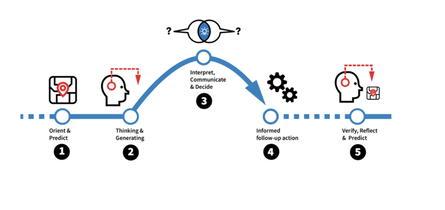NEW!
A REFRESHING RETAKE ON FORMATIVE ASSESSMENT = FORMATIVE ACTION
A blog by Tom Sherrington
https://teacherhead.com/2023/10/18/formative-action-a-brilliant-refreshing-take-on-formative-assessment-and-responsive-teaching/
|
Your browser does not support viewing this document. Click here to download the document.
|
DYLAN WILIAM
"The key features of effective learning environments are that they create student engagement and allow teachers, learners and their peers to ensure that learning is proceeding in the intended direction. The only way we can do this is through assessment. That is why assessment is, indeed the bridge between teaching and learning." - Embedded Formative Assessment
Using Formative Assessment
-
POP: Feedback
-
POP: Impact
<
>
- What kinds of feedback are our students receiving? Is the feedback effective in enhancing learning and encouraging students to be self-regulating and engaged learners? Punchbowl PS, 2011
- How are we using feedback & positive talk to build relationships that promote student engagement? Guildford West PS, 2014
- How well are formative assessment practices used to encourage students in their learning and inform teachers planning? How are students encouraged to be active participants in the learning? Granville South PS, 2012
- To what extent is formative assessment impacting on the learning and engagement of our students? Guildford West PS, 2016
- How well are we engineering learning so that our students: Understand what it is they're learning and why it's important; Know how successful they are in that learning; and Understand where to next? Granville South PS, 2015
WHAT DO WE MEAN BY FORMATIVE ASSESSMENT? CLICK ON THE SLIDE SHOW FOR KEY CONCEPTS
|
ENGINEERING EFFECTIVE DISCUSSIONS:
Prepared by the teachers of Sefton Infant, this document gives practical examples of how to engineeer effective discussions, tasks and activities that elicit evidence of learning.
Your browser does not support viewing this document. Click here to download the document.
|
USING ASSESSMENT FOR LEARNING TO TAILOR MATHS INSTRUCTION.
Summary of 5 Key Ideas compiled by Granville East PS Click here to download
Your browser does not support viewing this document. Click here to download the document.
|
|
EVALUATING PRACTICE: An excellent summary from the Scottish Education Authority describes best practice for formative assessment. Click here to download
Your browser does not support viewing this document. Click here to download the document.
|
WHAT ENABLES FA?: This research article investigates what needs to be in place for teachers to effectively implement formative assessment. An important read for school leaders. Click here to download
|
